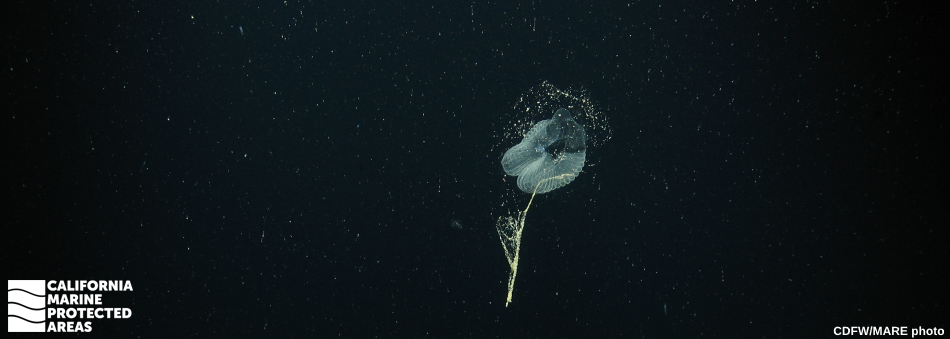
Overview
Portuguese Ledge State Marine Conservation Area (SMCA) covers almost 11 square miles of ocean habitat roughly four miles offshore in Monterey Bay. This SMCA has the greatest depth range of any marine protected area (MPA) in California, from about 300 to 4,800 feet. The SMCA's seafloor is mostly composed of soft sand and sediments, but does include a limited amount of hard, rocky seafloor habitat.
A portion of the SMCA dips into the deep Monterey Submarine Canyon. This offshore region is important for many deep-sea fishes, particularly deepwater rockfish like greenspotted and chilipepper rockfishes; this area was designated an MPA in 2007 to protect deepwater species such as these.
Each year, Monterey Bay hosts an unparalleled wildlife viewing display. Humpback, gray, and blue whales feast on plankton, krill, and schooling fish. Dolphins, seals, and sea lions join the feast by hunting schools of baitfish, while seabirds add to the chaotic scene by diving into the water from great heights. While these charismatic species put on quite a show, this area also supports thriving populations of other, less visible marine life.
Within Portuguese Ledge SMCA, the take of all living marine resources is prohibited with the exception of fishing for pelagic finfish (a list of the allowed species that are included can be found in the "Regulations" section below).
Regulations
It is unlawful to injure, damage, take, or possess any living, geological, or cultural marine resource, EXCEPT:
Recreational and commercial take of pelagic finfish (northern anchovy, barracudas, billfishes, dorado (dolphinfish), Pacific herring, jack mackerel, Pacific mackerel, salmon, Pacific sardine, blue shark, salmon shark, shortfin mako shark, thresher shark, swordfish, tunas, Pacific bonito, and yellowtail) is allowed. No commercial take of marlin is allowed. Not more than five percent by weight of any commercial pelagic finfish catch landed or possessed shall be other incidentally taken species.
California Code of Regulations Title 14, Section 632(b)(74)(opens in new tab)
Quick Facts
MPA size: 10.64 square miles
Depth range: 302 to 4,793 feet
Habitat composition*:
- Sand/mud: 10.44 square miles
- Rock: 0.20 square miles
*Habitat calculations are based on three-dimensional area and may exceed the total MPA area listed above.